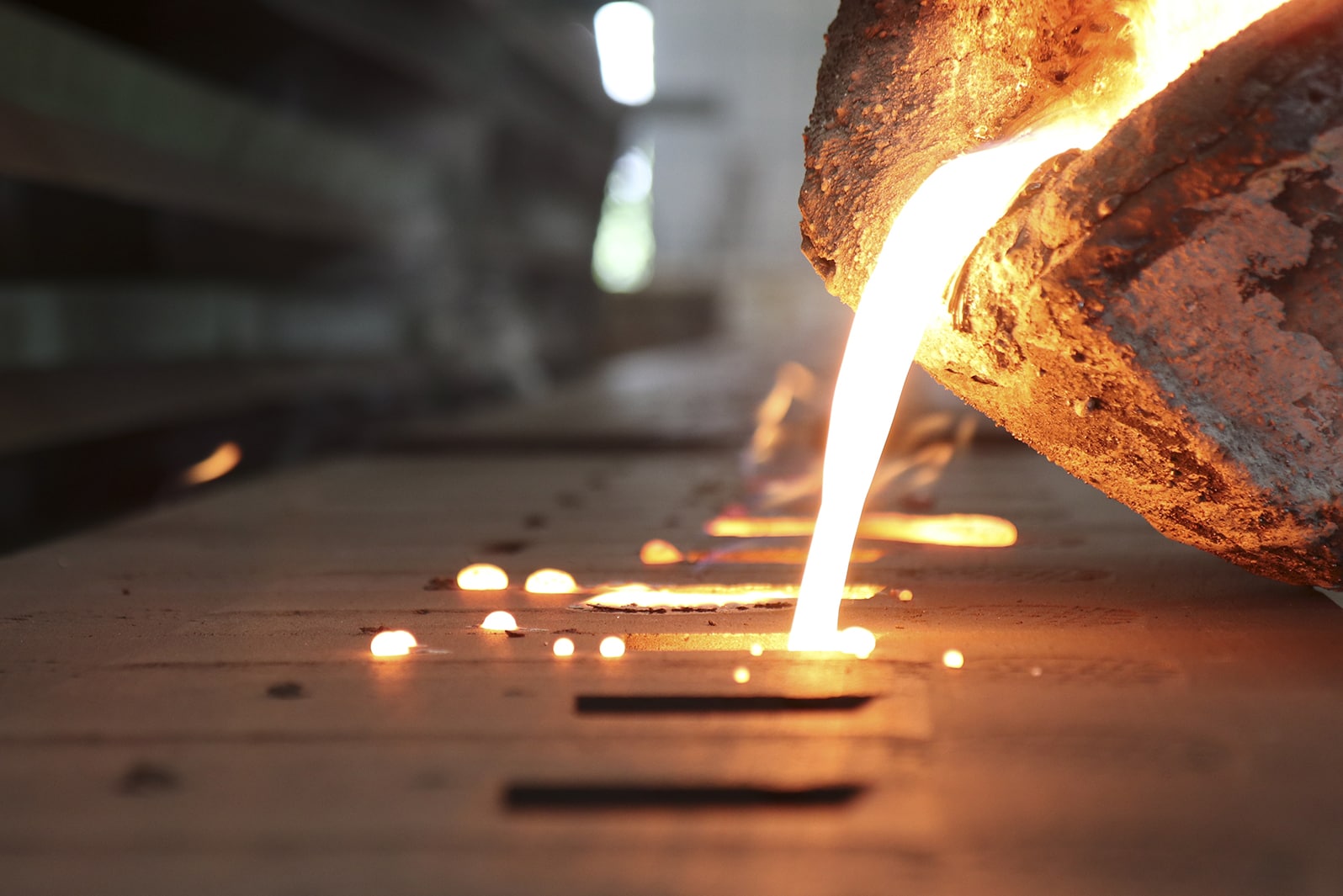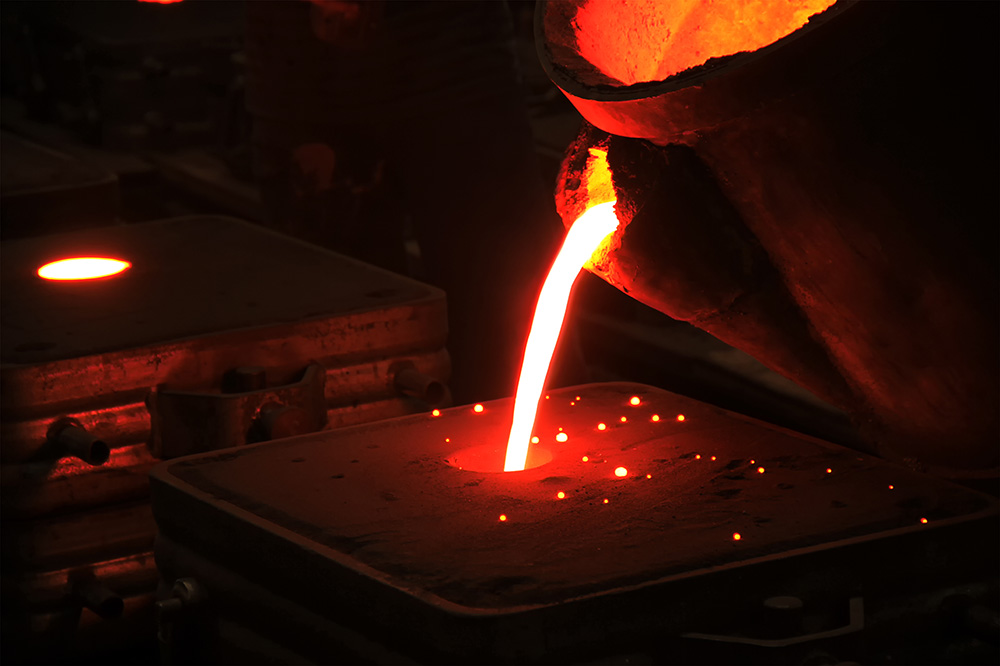The Function of Metal Casting in Advancing Production Technologies
Metal Casting have actually notably affected the development of manufacturing technologies. They supply distinct layout versatility, enabling the production of complex geometries vital for various applications. Modern casting strategies are being improved by innovations like 3D printing and automation. These growths not only improve effectiveness but likewise address challenges in accuracy and sustainability. As markets proceed to develop, the role of Metal Casting stays essential in shaping their future. What exists ahead in this dynamic field?
The Development of Steel Casting Techniques
As the need for precision and effectiveness in production has grown, the advancement of Metal Casting techniques has undertaken considerable makeover. Historically, Metal Casting began with straightforward methods such as sand casting and lost-wax casting, which permitted craftsmens to create detailed forms. Gradually, developments in innovation introduced procedures like die casting and financial investment spreading, boosting accuracy and reducing waste. Wisconsin Aluminum Foundry. The intro of computer-aided design (CAD) and simulation software changed the planning stages, allowing makers to prepare for possible concerns and maximize layouts prior to manufacturing. In addition, the development of new products, such as innovative alloys and composites, has actually expanded the range of applications for Metal Casting. Automation and robotics have further polished spreading procedures, boosting uniformity and effectiveness. Consequently, the Metal Casting market has actually adapted to meet the needs of modern production, concentrating on sustainability and technology to stay affordable in an ever-evolving industry
Applications of Metal Casting in Secret Industries
The developments in Metal Casting techniques have opened a broad variety of applications throughout various markets. In the auto industry, Metal Casting are indispensable for creating engine blocks, transmission real estates, and various other crucial elements that require high toughness and longevity. The aerospace industry uses castings for complex parts like wind turbine blades and structural parts, making certain lightweight yet robust remedies for airplane.

In addition, the building market employs Metal Casting for architectural elements such as fittings and beam of lights, adding to the honesty of structures and infrastructure. In the power field, spreadings play a critical function in producing elements for wind turbines and power generation equipment, improving efficiency and reliability. In enhancement, the clinical field take advantage of accuracy castings used in medical instruments and prosthetics, demonstrating the versatility of Metal Casting throughout varied applications. This broad application emphasizes the significance of Metal Casting in modern-day manufacturing techniques.
Benefits of Metal Casting in Modern Production
Metal Casting supply countless advantages that greatly improve modern-day manufacturing processes. One essential benefit is layout versatility; Metal Casting enables the creation of complicated shapes and detailed geometries that are impossible or frequently challenging to achieve with various other manufacturing methods. This ability allows manufacturers to enhance product styles for performance and efficiency.
In addition, Metal Casting can sustain a large range of materials, consisting of iron, light weight aluminum, and steel, which can be tailored to satisfy certain mechanical properties and rust resistance requirements.

Cost-effectiveness is one more significant advantage; Metal Casting processes can generate huge quantities of get rid of marginal material waste, thus lowering manufacturing expenses.
The longevity of actors metal parts contributes to the longevity of items, decreasing the need for regular replacements. In general, the advantages of Metal Casting significantly add to effectiveness, sustainability, and technology within modern-day manufacturing environments.
Advancements Driving the Future of Metal Casting
While typical Metal Casting techniques have served the market well for years, current technologies are poised to change the field. Developments such as 3D printing innovation permit for rapid prototyping pop over to this site and the manufacturing of complex geometries that were formerly unattainable. These innovations not just boost imp source layout flexibility but additionally decrease waste and reduce lead times. On top of that, the combination of automation and robotics in casting processes is enhancing procedures, boosting precision, and improving employee safety and security. The development of composite products and brand-new alloys is making it possible for the creation of stronger, lighter spreadings customized for particular applications. Digital innovations, consisting of artificial intelligence and artificial intelligence, are optimizing casting parameters and anticipating maintenance, driving enhanced quality assurance. Collectively, these advancements are pressing the boundaries of Metal Casting, fostering greater efficiency and sustainability in production, and positioning the industry for future development and competitiveness.
Challenges and Solutions in Metal Casting Processes
As developments in Metal Casting technology remain to reshape the sector, different difficulties remain that producers should address to totally take advantage of these developments. One significant problem is the irregularity in material residential or commercial properties, which can lead to inconsistent top quality and efficiency. This irregularity commonly results from fluctuations in resources and handling problems. Additionally, the increasing prices of power and products posture economic restrictions, pushing makers to seek a lot more efficient procedures.
To deal with these challenges, firms are significantly embracing automated systems and advanced simulation methods to enhance accuracy and consistency. Implementing top quality control procedures throughout the manufacturing procedure also aids in detecting defects early. Investing in study for alternate products may minimize costs and enhance sustainability. By resolving these difficulties with innovative services, the Metal Casting market can boost productivity and preserve competitiveness in the progressing manufacturing landscape.
Regularly Asked Inquiries
What Materials Are Frequently Made Use Of in Metal Casting Processes?
Usual products over at this website utilized in Metal Casting processes consist of aluminum, magnesium, iron, and bronze. Each product has distinct residential or commercial properties that provide to different applications, boosting the flexibility and performance of the last actors items in various industries.
Exactly How Do Ecological Laws Influence Metal Casting Procedures?
Environmental regulations urge Metal Casting operations to embrace cleaner methods and technologies, frequently boosting production costs. Compliance might bring about cutting-edge processes that minimize waste and emissions, inevitably advertising sustainability within the Metal Casting industry.
What Are the Precaution in Metal Casting Facilities?
Security measures in Metal Casting centers include appropriate air flow, individual protective tools, regular security training, devices maintenance, and adherence to safety and security laws, making certain a secure setting for employees while minimizing risks linked with hazardous products and procedures.
How Is Top quality Controlled in the Metal Casting Process?
Quality assurance in Metal Casting entails extensive assessments, consisting of visual analyses, dimensional checks, and product testing. Adherence to market criteria and carrying out top quality administration systems guarantees that spreadings satisfy specific requirements throughout the manufacturing procedure.
What Is the Future Work Expectation for Metal Casting Professionals?
The future work outlook for Metal Casting specialists appears appealing, driven by improvements in modern technology and enhancing need across various sectors (Aluminum Castings). Growth in automation and lasting techniques will likely create brand-new chances in this market
Historically, Metal Casting began with basic approaches such as sand spreading and lost-wax casting, which allowed artisans to create detailed forms. Over time, innovations in technology presented procedures like die spreading and financial investment casting, improving accuracy and decreasing waste. In enhancement, the clinical field benefits from precision castings made use of in surgical instruments and prosthetics, demonstrating the convenience of Metal Casting across diverse applications. Metal Casting use countless advantages that considerably enhance contemporary manufacturing procedures. Typical products used in Metal Casting processes include aluminum, iron, magnesium, and bronze.